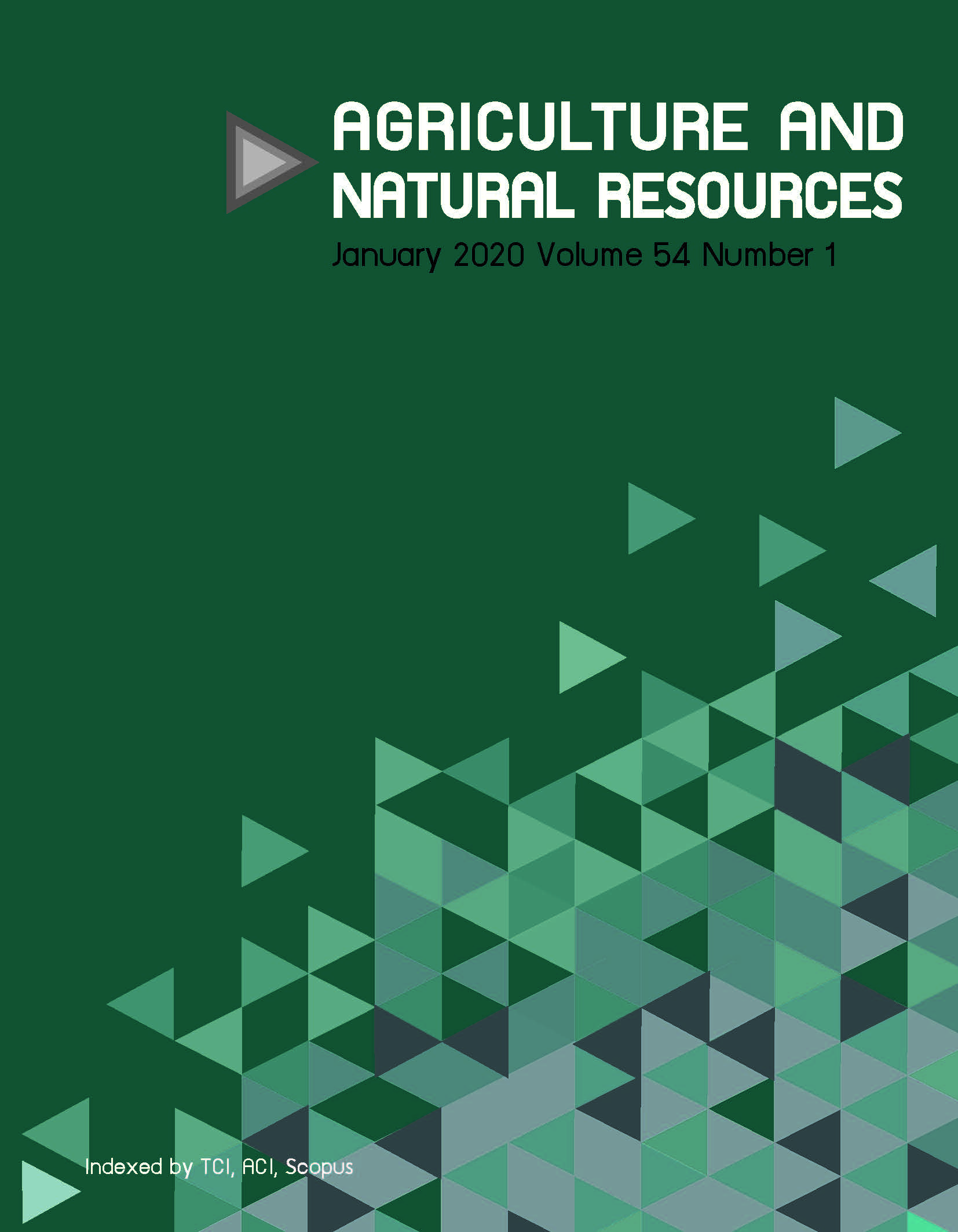Longitudinal survey of Campylobacter and Salmonella isolates from free-grazing, laying duck flocks in lower central provinces, Thailand
Abstract
A longitudinal investigation was undertaken of the prevalence of Campylobacter and Salmonella in two flocks of free-grazing, laying ducks raised in the lower central region of Thailand. The ages of the ducks studied were 4–40 wk. During 4–28 wk, the ducks grazed in rice fields; afterwards, they were accommodated in open houses. In total, 1,262 samples were collected from the two flocks; 39.0% of all samples were positive to Campylobacter spp. of which 71.3% and 28.7% were C. jejuni and C. coli, respectively. For Salmonella spp., 10.2% of samples showed positive results with 22 serovars. Moreover, the three most isolated serovars were S. Mbandaka (27.1%), S. Typhimurium (17.8%) and S. Newport (14.0%). In summary, the 9 mth survey detected Campylobacter and Salmonella from the bodies and environment of the ducks at all ages. Consequently, duckling selection from parent stock should avoid selecting individuals with these pathogens. Moreover, biosecurity measures should be improved according to the farm standards issued by the Ministry of Agriculture and Cooperatives.
Downloads
Published
How to Cite
Issue
Section
License
Copyright (c) 2020 Kasetsart University

This work is licensed under a Creative Commons Attribution-NonCommercial-NoDerivatives 4.0 International License.
online 2452-316X print 2468-1458/Copyright © 2022. This is an open access article under the CC BY-NC-ND license (http://creativecommons.org/licenses/by-nc-nd/4.0/),
production and hosting by Kasetsart University of Research and Development Institute on behalf of Kasetsart University.







